Sony MDR-MV1 Review
We’ve been covering some pretty big releases this week: first the MoonDrop Blessing 3, and now the MDR-MV1, a $400 open-back reference pair from Sony that already received quite a bit of attention even before it was publicly available. Sony doesn’t have a lot in the way of open-back releases, and more interesting still, they designed the MDR-MV1 specifically for use in mixing and mastering spatial audio. For the purposes of this review, I’ll be judging them with their reference use case in mind. I’ll be going over what the Sony MDR-MV1 comes with, its fit and technical design, and most importantly, what it sounds like.
What’s in The Box?
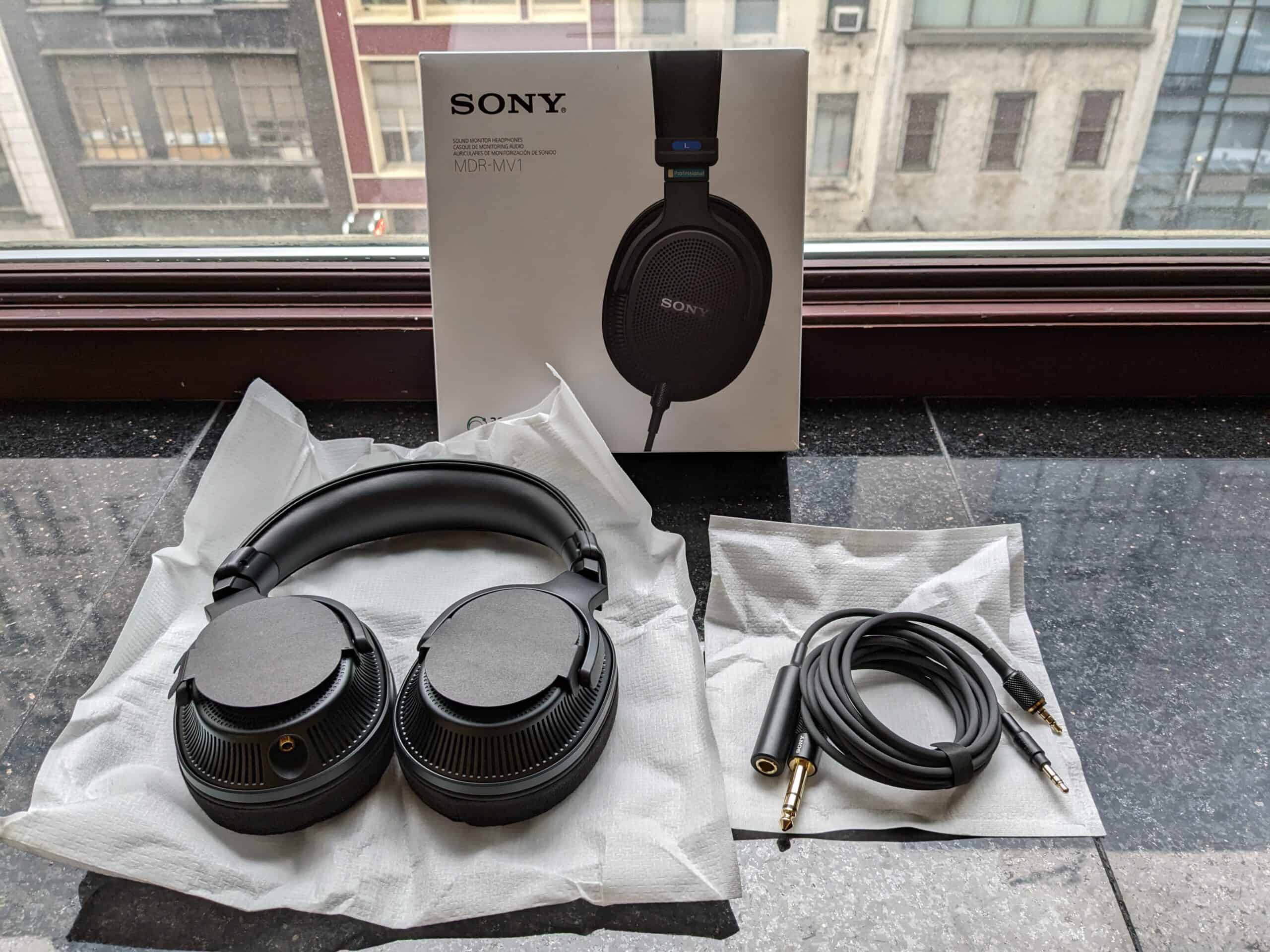
- Sony MDR-MV1 Open-Back Headphones
- 2.5 meter Cable with 6.35mm Unbalanced jack
- 6.35mm to 3.5mm Adapter
- 1 Year Warranty
- Product guide
Look and Feel
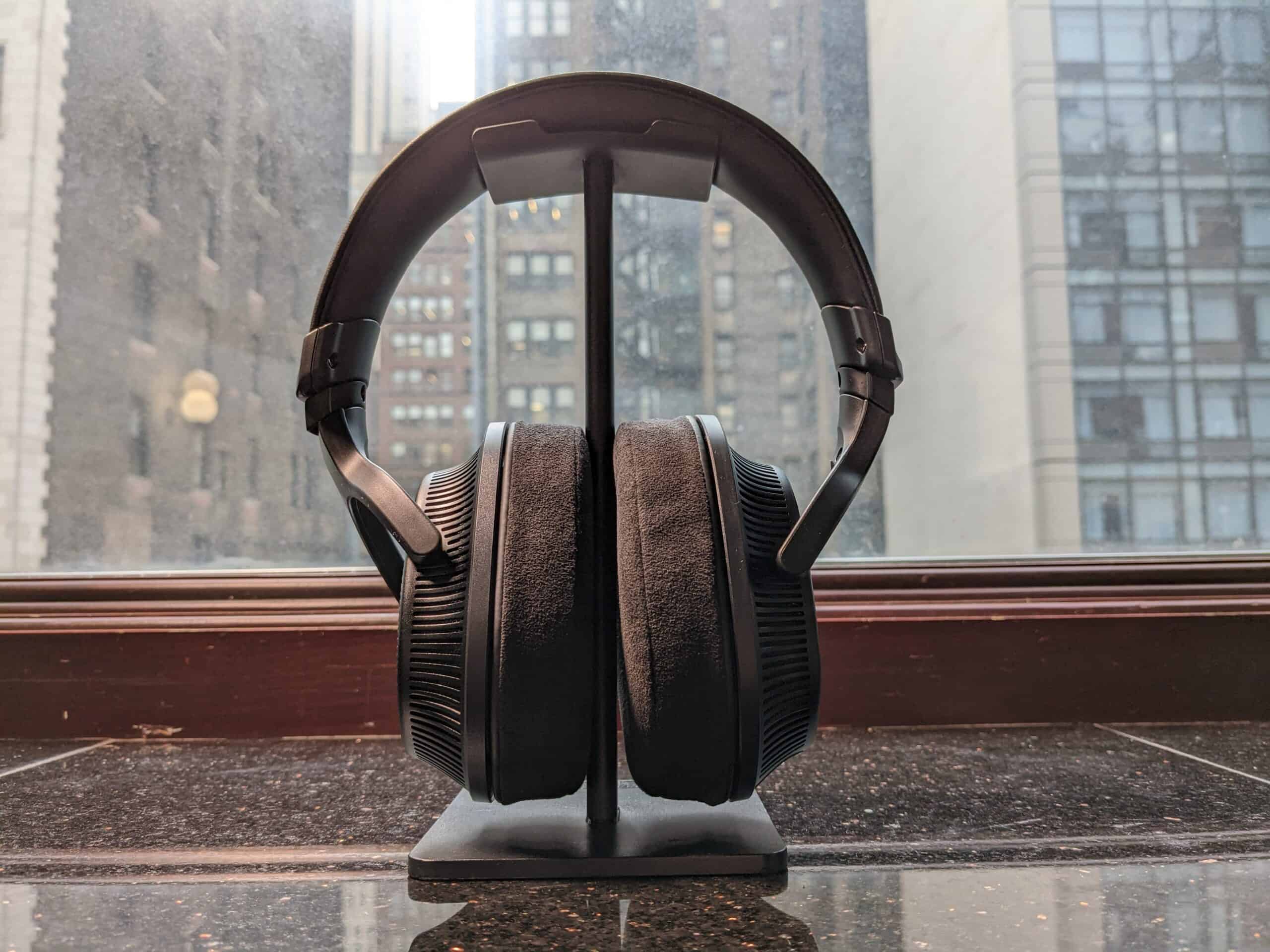
The Sony MDR-MV1 doesn’t come with much, and is rather unceremoniously packaged for a $400 headphone. I wish there was an additional shorter cable included with it, or better yet a carrying case – or at least carrying pouch? I don’t know, just give the people a little something more. I’m not particularly irked by it considering headphones like this aren’t intended to wander too far from the house or the studio, but it’s worth noting for those who care about these details more than I do.
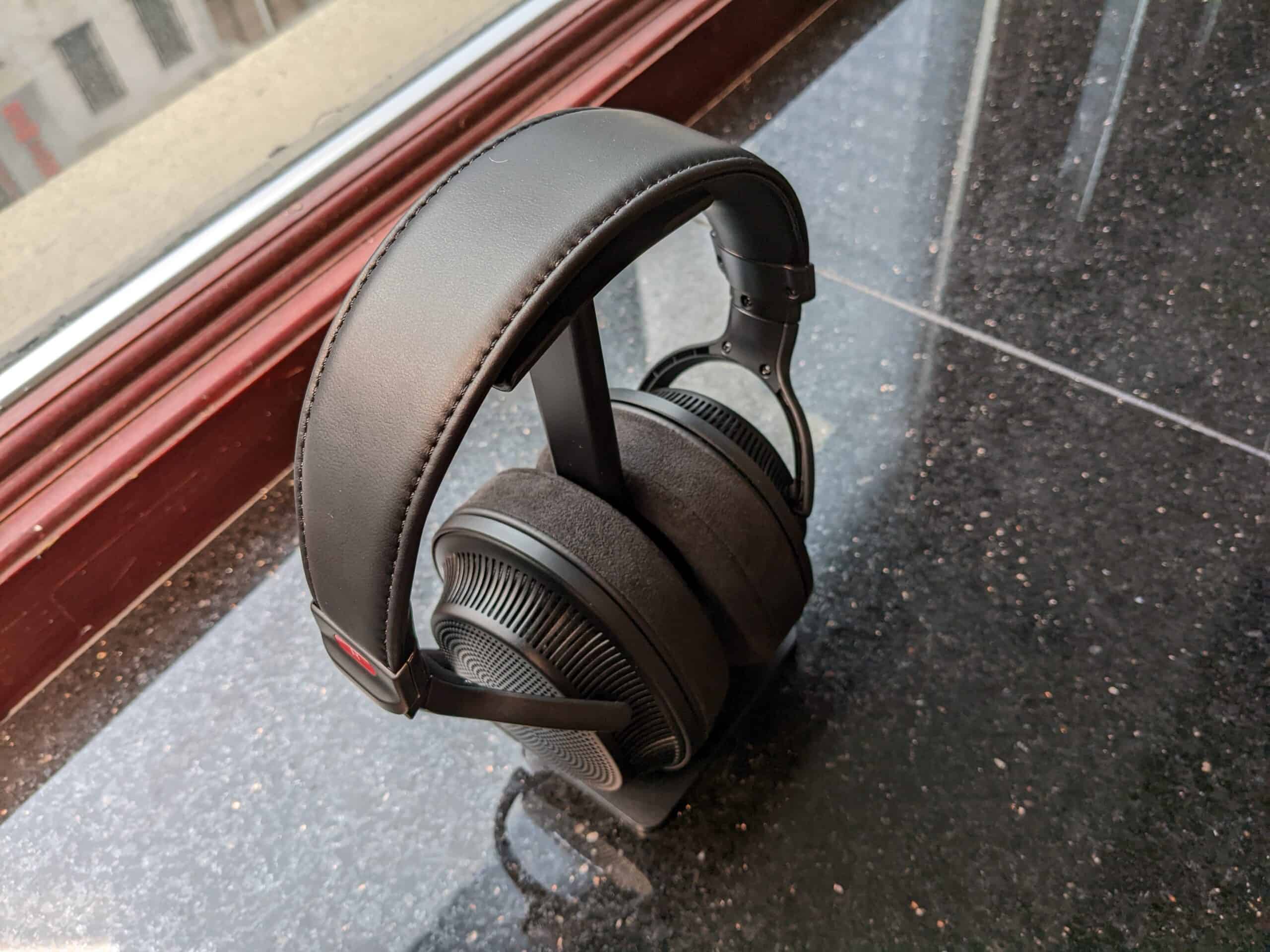
*I promise there’s a redeeming quality to be had for everything I’m saying so far, but one more criticism I have in this section: I’m feeling a little suspect about the build quality we see with the MDR-MV1. Most of the housing and structural components are made from thin plastic. The headband, while lightly but sufficiently padded with memory foam, is encased in cheap synthetic leather. I think this look and build betrays their price point – and the actual plethora of positive qualities the MDR-MV1 has going for it from here on out.
*Correction, 05/05/23 : I have since learned that the MDR-MV1 is made from a very thin and lightweight aluminum – not plastic. Having learned that, this is actually a rather impressive build. The fact that I thought it was plastic is a testament to how convincingly casual and lightweight Sony’s MDR-MV1 really is.
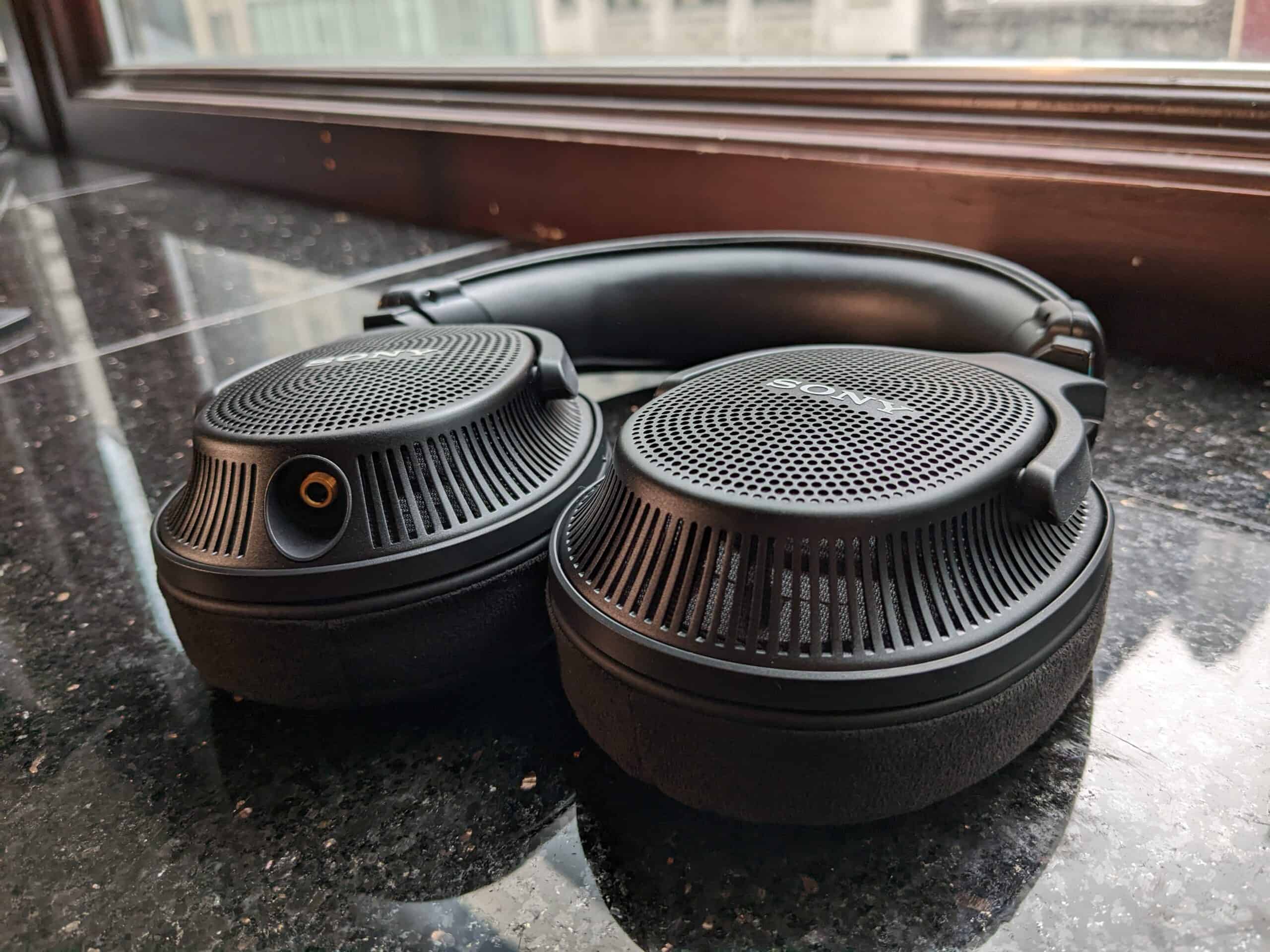
When it comes to fit, the MDR-MV1 is phenomenal. The included earpads are suede, breathable, and a perfect density that squished comfortably against my head. Clamp pressure is clearly fine-tuned, keeping the headphone securely on my head without the skull-crushing tension commonly found in the headbands of reference cans. While on one level I’m not such a fan about the amount of plastic we’re seeing in this design (please read the correction in the paragraph above), it’s almost certainly responsible for how awesomely lightweight the MDR-MV1 is at 223 grams. It’s genuinely one of the most comfortable headphones I’ve ever had on my head, and I was able to wear it for hours on end without a trace of fatigue on my temples or around my ears.
One pertinent observation worth mentioning is that cans and pads don’t leave a ton of room for a listeners’ ears. I didn’t have issues with this as my ears air on the smaller side of things, but those with larger ears might run into some issues here.
Lastly, the cable: pretty average build quality, neither flimsy nor particularly sturdy, and it screws securely into place when connecting to the MDR-MV1. Good enough for me.
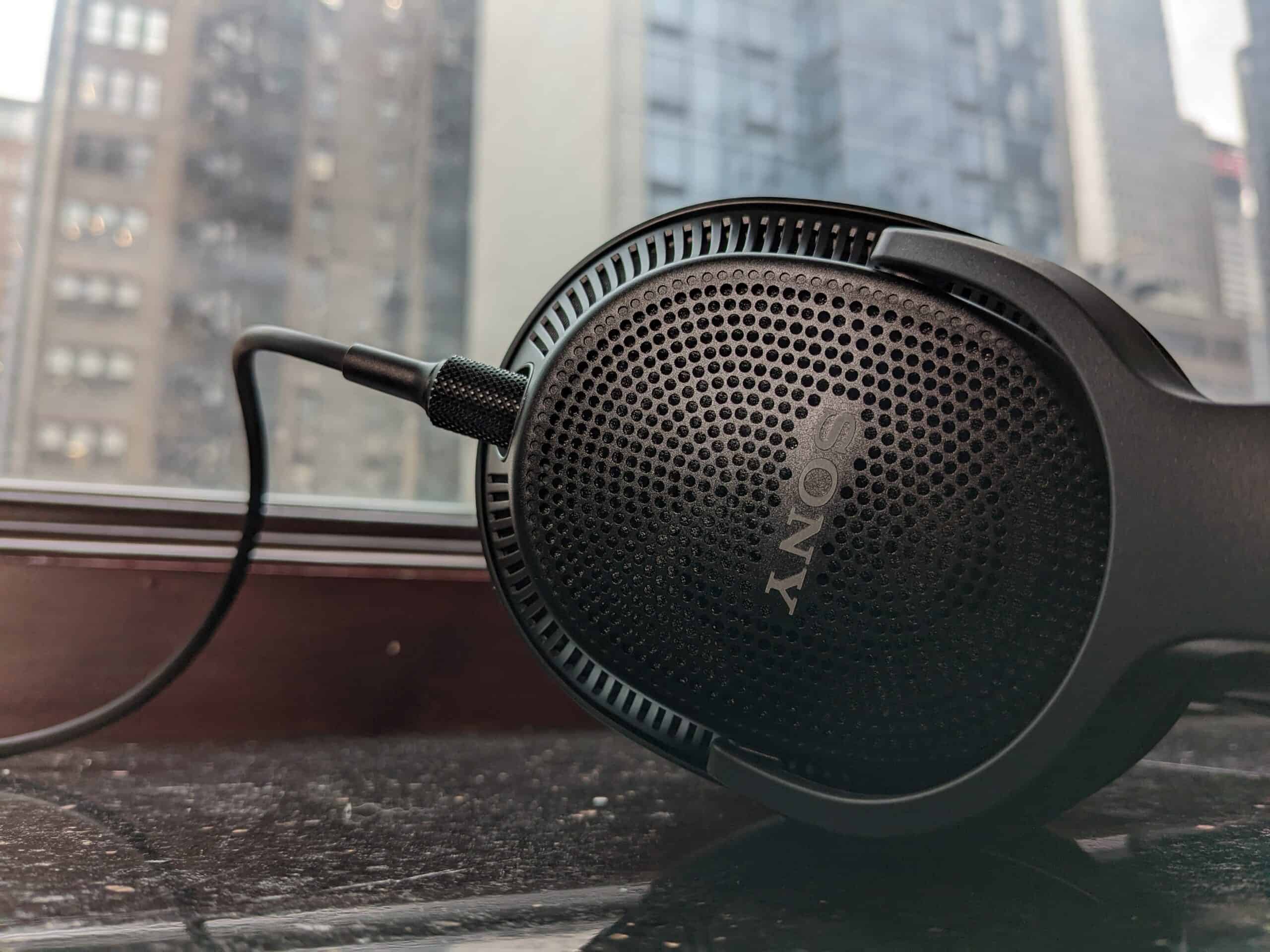
Technical Design and Specs
After reading Sony literature on the MDR-MV1, I’m left with the impression that technical design is fairly straightforward: an open back with a low distortion, corrugated, high uniformity 40mm dynamic driver. Often times, this is really all you need – let’s see how it plays out.
| Spec | Sony MDR-MV1 |
| Driver/Operating Principle | 40mm Dynamic Driver / Open-Back |
| Impedance | 24 ohms |
| Sensitivity | 100 dB |
| Frequency Response | 5 Hz – 80 kHz |
Soundstage and Imaging
The Sony MDR-MV1 is less concerned with producing a vast and dramatic stage than it is with performing fast, accurate, and fluid imaging. This strikes me as appropriate for a headphone meant for professional and studio use, as I would use a similar description for other studio classics such as the good ol’ Beyerdynamic DT 1990. Depth is presented in a strictly forward facing fashion, and modestly extends a holographic stereo image just beyond my face. A little more spatial character is present in the MDR-MV1’s width, with hard pans producing a more convincing sense of distance than what I experienced in its depth. There’s not much grandeur to be found here, but that’s not really point.
Rather, this small stage couples with the MDR-MV1’s precise imaging to produce a sensation of being able to reach out and grab an individual part of a mix. It’s particularly sensitive in this sense, picking up on the most subtle panned position of a part and executing it flawlessly. It’s on its smaller stage that a guitarist, bassist, vocalist – who or whatever it is – find distinct and pin-pointed placements that stand firmly separated from one another. Dynamic pans that quickly move from right to left occur with a speedy fluidity that’s felt on the face, yet manage to avoid digressing towards a two dimensional, linear character. Songs that feature dry instrument channels panned opposite from their wet reverb channels produce a stark binaural satisfaction.
Like any reference headphone worth its salt, the MDR-MV1 uses its stage as a tool to hone in on parts and plot precise locations and produce its spatial separation. So far, I’m impressed.

Lows
There seems to be a recent trend of reference headphones throwing reasonable bass responses into their tunings. As someone who makes and mixes music, I’m 100% for it. In this sense, the Sony MDR-MV1 doesn’t disappoint, as it provides thick and natural mid bass with a modest but not-verdone sub bass roll off. Though I can’t say I could get a proper bass-slam from the headphone, I could get something close to it without having to turn up the volume to terribly loud levels – let’s call it a punch. High bass is kept in check, and keeps the low end cleanly separated from the mid range while retaining accurate timbre details and impact.
Mids
While I’m usually ready to call a reference headphone’s mid balance flat and call it a day, I can’t say that was my experience with the Sony MDR-MV1. Rather, it’s here that the more treble forward nature of the headphone starts to expose itself. Low mids are kept relatively flat and even with high bass, while high – and even center – mids start ramping early on into the MDR-MV1’s higher frequencies. This gives a somewhat intense and driving character to the overall sound signature; rather than finding its reference character in being truly neutral, it finds it in being, excuse these taboo descriptors, “crisp” or “clear.” Let me be specific with what I mean by this: high bass and low mids occupy a frequency range that, when over-amplified, produce a muddy signature that lacks separation. The MDR-MV1’s noticeable caution in this area in favor of the immediately proceeding midrange frequencies makes it a highly intelligible signature, if not properly neutral. Guitars and vocals come through with a distinct emphasis in their overtones, aggressively avoiding the risk of congesting their lower fundamentals in the low mids.
Highs
Like plenty of headphones made for mixing and mastering, the MDR-MV1 has some pretty intense moments in its treble. Actually I take that back : more than moments, the treble response is through-and-through amplified, picking up where high mids leave off; I can safely advise treble sensitive listeners who prefer dark signatures to avoid picking up the MDR-MV1. However, I have a penchant for brighter signatures, and was pretty happy with and excited by the exposing lift it offered in the balance. Upper harmonics were brought into sharp focus, as were reverb decays and cymbal transients. While the MDR-MV1 doesn’t find warmth in its backseat high bass and low mids, it finds a pretty high heat in its treble.
As much as I enjoyed the low and mid treble amplitudes, I have a small point of criticism for its upper treble. Saxophones and sawtooth synths, which share common timbre qualities, had little too much buzz in them. When I dragged some tracks into a DAW to toy with a dynamic EQ and figure out just where this buzzy quality was coming from, I narrowed it down to somewhere between 12 – 14 kHz. Not to offend the religious anti-EQ crowd, but creating a very light but sharp dip in this particular frequency range did a surprisingly effective job in negating the buzzy issue that I had with the MDR-MV1.
Overall
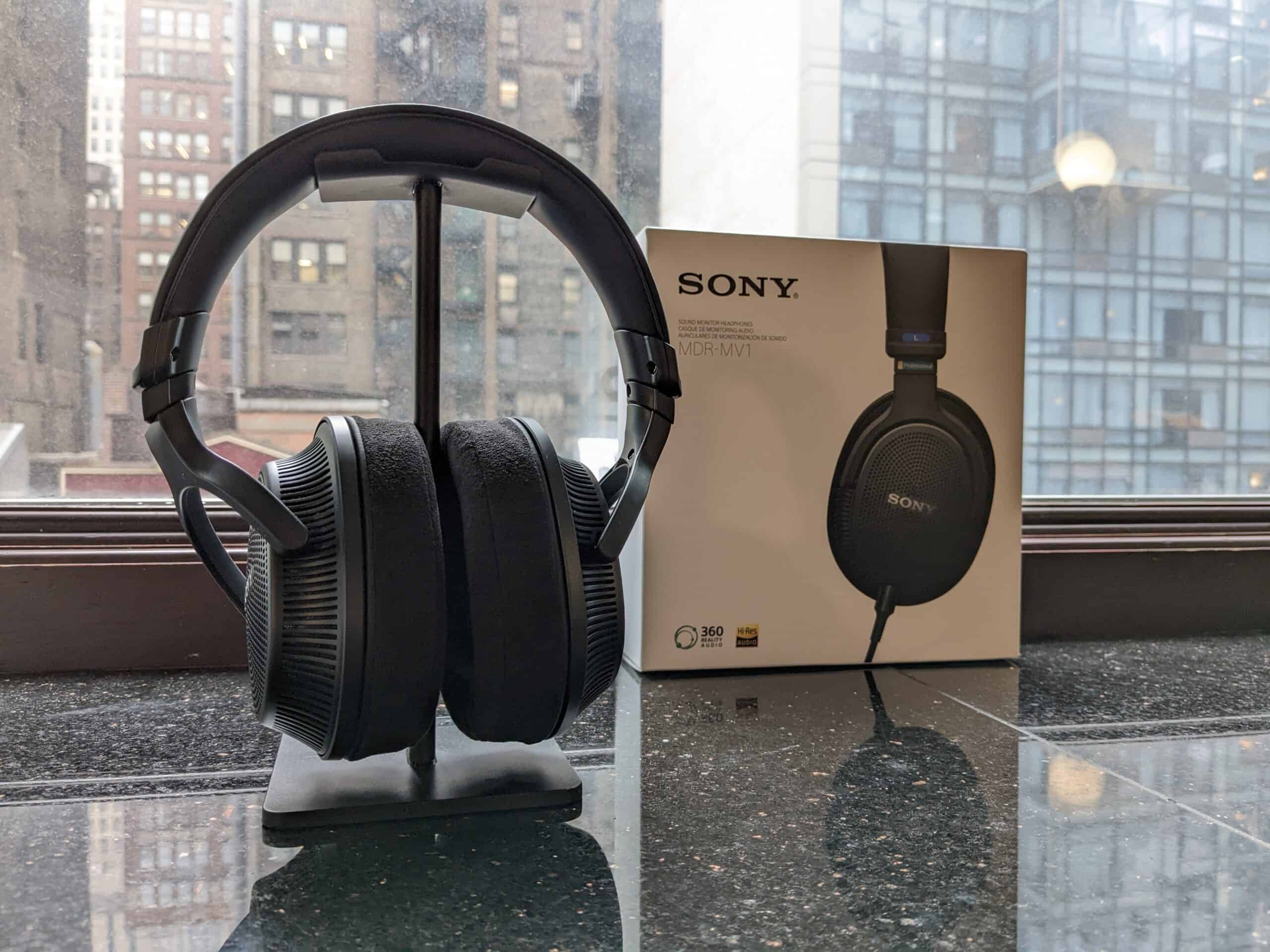
While I don’t think the Sony MDR-MV1 is a truly neutral headphone, I nonetheless find it to be an excellent choice for those in the market for a somewhat affordable mixing headphone. It offers an articulate balance with solid and realistic detail retrieval, accurate imaging, and an adequately fast performance. Even beyond their professional use case, their exceptional comfort and energetic balance have a lot to offer casual listeners as well as bedroom producers. Overall, I’m impressed with what I heard from the MDR-MV1, and think it’s a worthy contender in the hotly contested mid-priced tier of reference headphones.
You can purchase and/or read more about the Sony MDR-MV1 here from Audio46.
Compare the ranking of various headphones, earbuds and in-ear monitors using our tools.
Discuss this, and much more, over on our forum.
---MAJORHIFI may receive commissions from retail offers.














